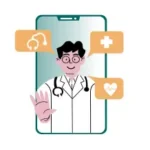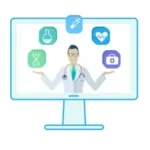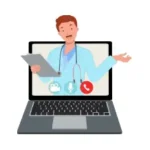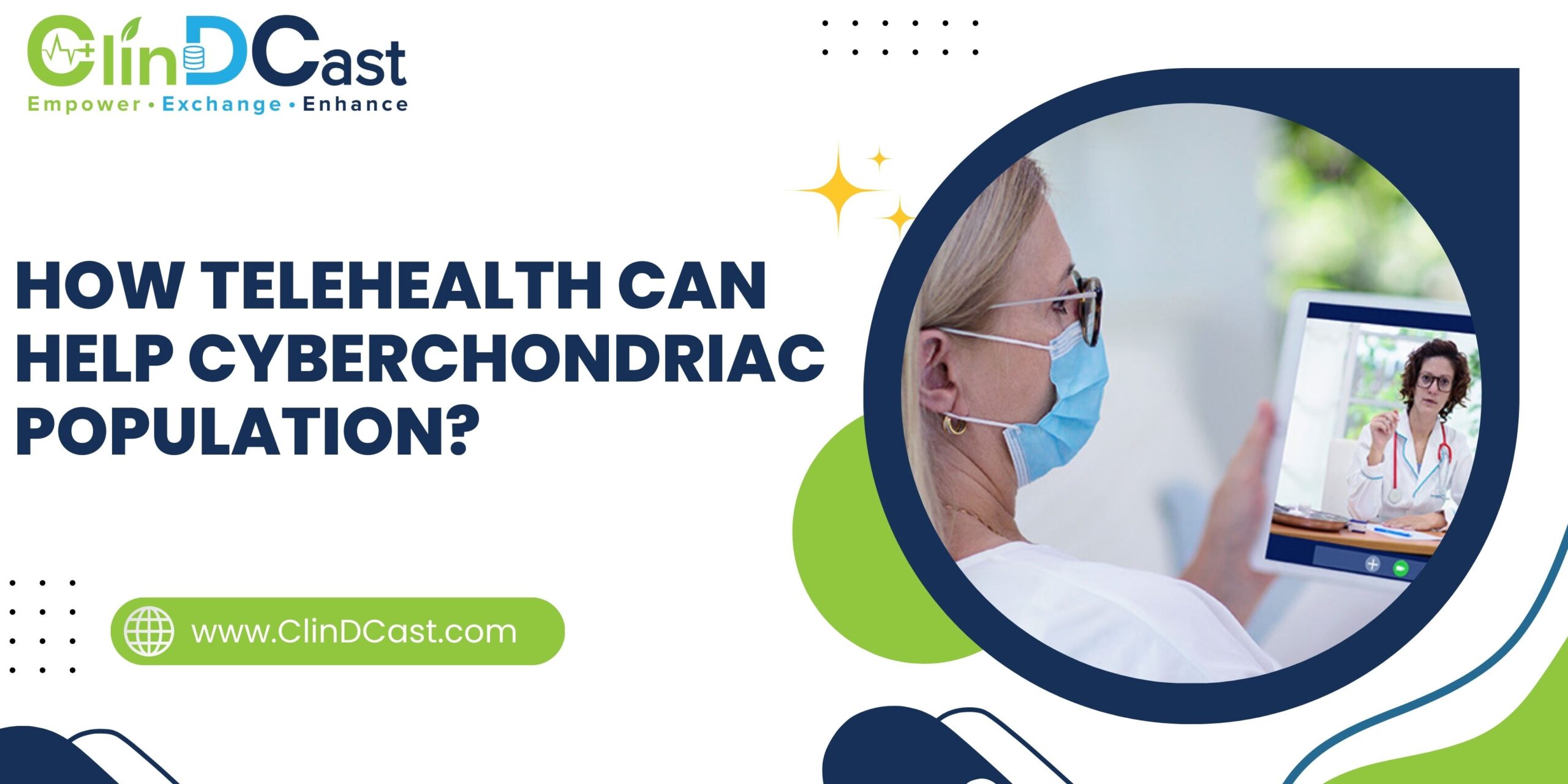
The field of healthcare marketing is always evolving due to new developments and trends such as generative artificial intelligence. Even in this ever-changing world, we can predict future events. Significant developments that we predict will emerge in 2024 include improved technical SEO for medical content, analytics tools that comply with HIPAA, focused talent marketing, powerful video content, precise targeted advertising, and customized email campaigns. In the upcoming years, these Top Healthcare Digital Marketing Trends in 2024 will influence how healthcare organizations interact with stakeholders and patients.
Healthcare Digital Marketing Emerging Trends in 2024
1. Technical SEO for Medical Content
Due to the sensitive nature of the material and restrictions, medical websites have particular SEO issues. On the other hand, to make sure your website is reliable, easily navigable, and appears high in search results, you need to have good technical SEO.
Crawlability and Indexing
- Structured Data: To give clear information about your practice, personnel, services, and conditions handled, use schema markup. This makes your information easier for search engines to interpret and presents it correctly in rich snippets.
- XML Sitemap: Send a revised XML sitemap to Google and Bing, two of the top search engines. This facilitates their quick discovery and indexing of your pages.
- Robots.txt: Ensure your robots.txt file doesn’t block search engine crawlers from accessing important pages.
- Mobile-Friendliness: Ensure that your website works seamlessly on all devices and is responsive to mobile users. Mobile-friendly websites rank higher in Google search results.
Website Speed and Performance
- Page Speed Optimization: Reduce the time it takes for pages to load by utilizing a caching plugin, optimizing images, and compressing files. Both user experience and SEO rankings are enhanced by faster loaded pages.
- Server Response Time: Select a reputable host with quick server response times. The crawlability and performance of your website might be greatly impacted by slow servers.
- Technical Audits: Use programs like Screaming Frog and Google Search Console to do regular technical audits on your website in order to find and address any technical problems.
2. HIPAA Analytics Compliance
Despite the fact that web visitor behavior is of interest to healthcare providers, several analytics solutions, including Google Analytics 4 (GA4), are not HIPAA compliant. Despite this restriction, analytics can still be useful for healthcare businesses. There are steps you may do to keep GA4 and other analytics tools free from HIPAA problems. These methods include concealing IP addresses and specific types of URLs (such as URLs with names that can reveal a user’s medical condition).
Even though navigating online analytics and HIPAA compliance can be very difficult, analytics solutions can still be very beneficial for healthcare firms. If you don’t want to use workarounds to stay compliant, think about utilizing an analytics solution made with HIPAA compliance in mind.
3. Talent Marketing
In the last few years, the Covid-19 pandemic has made staff shortages in the healthcare industry a global problem. Because of this, a lot of healthcare companies are making hiring new employees a priority in their marketing strategies.
Although producing leads for clients or consumers is sometimes linked to content marketing, one of the biggest results of your strategy may be generating leads for fresh talent. Talent recruiting can benefit greatly from the development of career websites with well-written and relevant information, especially in regions where there is a shortage of competent workers.
4. Video Content Marketing
With its potent ability to engage both potential and current patients, video material is crucial to contemporary healthcare marketing. To build relationships, providers can make use of a variety of information, including moving patient tales, staff experiences, and facilities tours. Explainer videos made by experts can help patients feel more educated and confident by demystifying medical concepts, practices, and treatments.
The strategic application of video marketing showcases business culture and expertise and goes beyond patient engagement to talent recruiting. Features like virtual tours and behind-the-scenes looks foster a friendly atmosphere that makes it easier for patients and prospective employees to get to know the company.
Maintaining high production standards, optimizing for search engines, and targeting video material to certain audiences are the best ways to maximize its efficacy. This strategy helps community outreach and care delivery in addition to improving patient education and trust-building.
Incorporating video into healthcare marketing strategies in 2024 is about more than just keeping up with the times; it’s about using a dynamic tool to provide more engaging, tailored, and educational experiences for all parties involved.
5.Targeted Advertising
Both small local hospitals and major worldwide healthcare institutions can benefit from targeted advertising. Local healthcare practices that operate on a smaller scale can particularly benefit from the capacity to target adverts to users in particular geographic locations. Finding your target demographic is the first step towards utilizing targeted ads efficiently. The following qualities are crucial for healthcare companies to have:
- Demographics: Age, gender, income, location, etc.
- Health conditions: Specific diseases, risk factors, or medical needs.
- Life stages: Pregnant women, new parents, seniors, etc.
6. Personalized Email Marketing
Since most consumers prefer to use email to schedule appointments and communicate with healthcare providers, email has long been a powerful tool for healthcare marketing. Utilizing this communication channel can help healthcare companies maintain relationships with both current and prospective patients. Send patients customized, targeted emails with informational articles, appointment reminders, deals, and more.
7. Content Marketing and Thought Leadership
Healthcare digital marketing in 2024 will still place a high value on thought leadership and content marketing. Organizations are using infographics, films, and blogs with educational information to create authority and trust with peers and patients.
By providing insightful content on health-related subjects, they establish their credibility as trustworthy authorities within the sector. Furthermore, presenting podcasts and webinars with medical experts enables lively conversations that promote peer-to-peer and community learning in addition to patient education. These initiatives not only improve patient involvement but also bolster the company’s standing as a pioneer in healthcare innovation and know-how.
9. Personalized Patient Experiences
By 2024, AI and machine learning will be used in healthcare digital marketing to improve patient experiences. These technologies use data analysis to customize marketing messages and health advice. Emails, blogs, and social media posts are examples of content that is customized to a patient’s health requirements and demographics, which increases relevance and engagement.
10. Voice Search Optimization
Healthcare voice search optimization entails making website content and frequently asked questions more voice search friendly. Healthcare providers can improve their visibility and accessibility for patients who use voice-enabled devices to seek medical information and services by offering succinct, straightforward answers and concentrating on conversational keywords.
11. Social Media Engagement
Social media platforms are used by health awareness campaigns to inform the public about certain health issues and to encourage the use of preventive care. Healthcare firms work with reliable individuals through smart influencer collaborations to reach a larger audience and establish reputation. These programs successfully engage communities, promote healthy behaviors, and generate meaningful conversations about wellness and healthcare practices by leveraging the reach and authority of influencers.
12. Mobile Marketing
Healthcare mobile marketing places a strong emphasis on a mobile-first approach, giving website design and marketing content top priority for the best possible usability and responsiveness on mobile platforms. Additionally, in order to improve patient involvement and provide individualized healthcare services, healthcare institutions are creating mobile apps. Patients can more easily manage their health with the help of these applications, which offer easy access to medical information, appointment scheduling, health monitoring, and interactive features.
Why is digital marketing essential for the healthcare industry?
The healthcare sector benefits greatly from digital marketing since it allows practitioners to interact and communicate with patients in a more individualized and highly focused way. Healthcare organizations can improve patient-provider communication, raise public awareness of health issues, and encourage preventative care through digital channels like social media, email, and search engines. In an increasingly digital age, it also makes it possible for reliable medical information to be shared, fosters trust, and makes healthcare services more easily accessible. All of these factors eventually lead to better patient outcomes and healthier patient-provider relationships.
Conclusion
The need of excellent partnerships never goes out of style in the marketing world. Is your company equipped to handle the changing demands of talent acquisition and healthcare marketing? Join together with ClinDCast, a reputable pioneer in enabling healthcare institutions. Reach out to us right now to start along the path to success in healthcare recruitment and marketing.






















